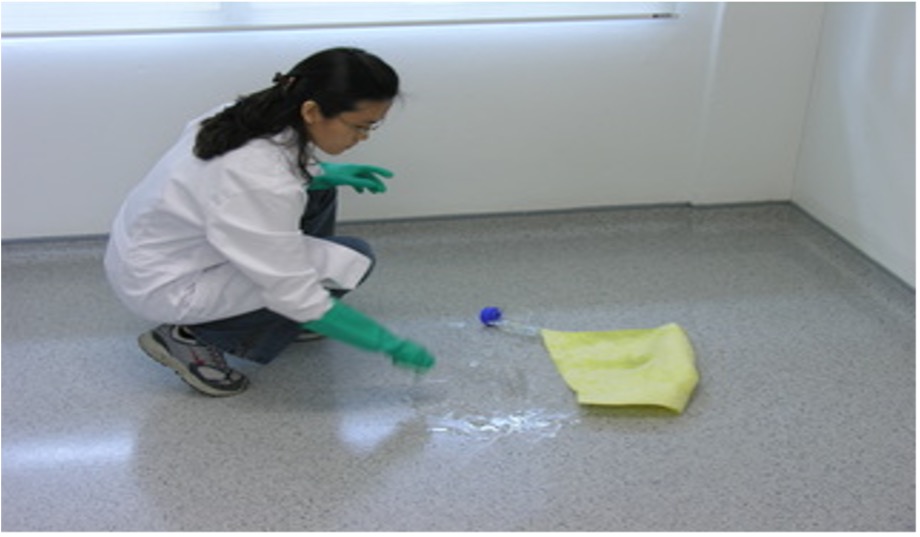OSHA Spill Kit Requirements
In addition to going into great detail about the requirements of job site safety programs for hazardous waste, OSHA provides spill kit requirements. You can find these guidelines in full in OSHA 3114 “Hazardous Waste Operations and Emergency Response.” Here, OSHA provides rules for all sorts of spill kits, each tailored to different types of job sites:
- Universal spill kits cater to the widest range of spill cleanups. This general-use kit, sufficient for most workplaces, can be for both oil-based and water-based spills, plus many other basic chemical spills. It should include nitrile safety gloves, eye goggles, shoe covers, sorbents and absorbent pads, disposal bags, and a spill containment handbook.
- As you might guess, job sites with large, powerful batteries need battery acid spill kits. Alongside nitrile gloves, eye goggles, and storage bags, battery acid spill kits need a poly apron to help protect clothing and skin from acid burns. Likewise, they include polymers to neutralize acid and often contain a specialized scoop for acidic pickup.
- Mercury spill kits, found in locations such as labs and producers of mercury containing products, feature all the universal spill kit items plus some particulars. Amalgamation powder helps clean up the mercury spill while indicator powder ensures that the area is totally clean. A vapor suppressor bottle and aspirator bottle keep employees’ lungs safe while a chemical sponge absorbs the spill.
- Job sites susceptible to biological spills, like blood or other bodily fluids, need biohazard spill kits, also known as bloodborne pathogen spill kits.
A biohazard spill kit contains biohazard sorbents often in the form of large pillows and mats, neoprene gloves with long sleeves, sanitizing surface wipes and sanitizing hand wipes, alongside all the regular essentials.
Though OSHA doesn’t offer specific requirements for how many spill kits need to be on-site, common-sense dictates that you’ll need at least two. That’s because each kit is designed to be used only once, so you’ll need to have a spare around to fulfill the requirement after you use one kit to respond to an emergency.
Additional Guidelines From Other Organizations
Essential as the governing body is, OSHA isn’t the absolute bottom line for spill containment on the job site. Chief among them is the Environmental Protection Agency’s Spill Prevention Control and Countermeasures rule. This SPCC rule allows employers to use active and passive secondary containment methods to meet spill containment requirements. Secondary containment, by the way, is the collection of tools and methods that serve as the second line of defense in the case that your primary hazardous waste containment measures fail. Here’s what the EPA means by different types of active and passive measures:
- Active secondary containment: Products, devices, and tools used to contain hazardous waste proactively or reactively, which must be physically deployed or engaged by people. Examples include absorbents, drain covers, and retractable containment walls.
- Passive secondary containment: These are the methods permanently put in place to contain potential spills. As the name implies, passive measures don’t require people to activate them. Some examples here are berms, dikes, and sloped floors.
When used alongside OSHA’s Process Safety Management Standard, the EPA’s SPCC essentially allows employers and facilities that deal with hazardous waste more flexibility in choosing effective control methods to best suit their individual needs.
The Department of Transportation 49 CFR 173.3 details spill containment for hazardous material during shipping, and the EPA 40 CFR 264.175 gets into requirements for container storage areas and containment systems. Meanwhile, the Uniform Fire Code from the National Fire Protection Association provides regulations for spill control, drainage control, and secondary containment of liquid containers of a high capacity.
Spencer-SHE has been providing Safety, Health, and Environmental Compliance Guidance since 1980. We offer our clients complete consultation options. Contact us for assistance with your SPCC Plan and compliance guidance with EPA standards.
Click here to contact Spencer-SHE for more information.
Sources:
https://legalbeagle.com/7229607-osha-spill-containment-requirements.html

